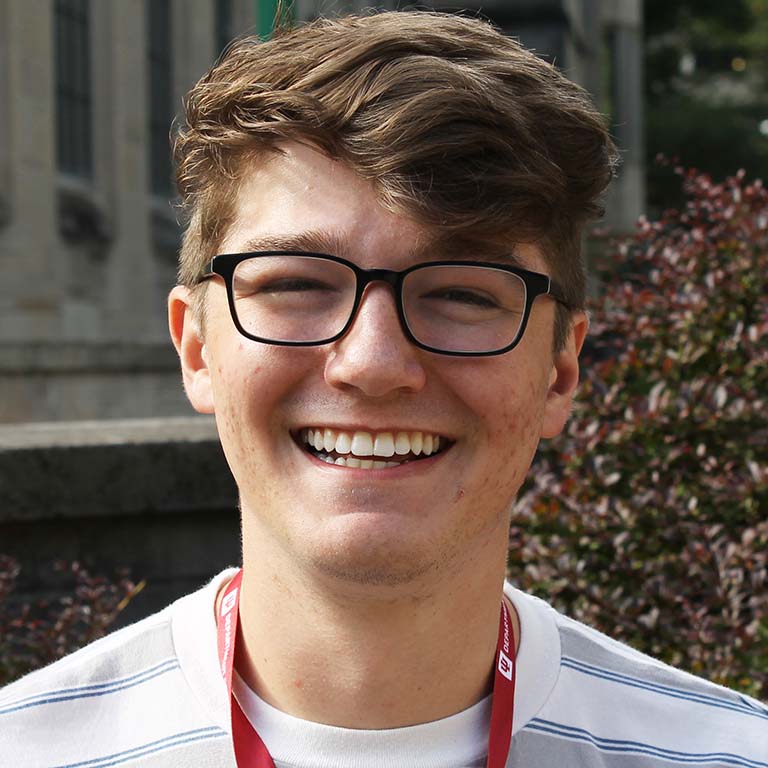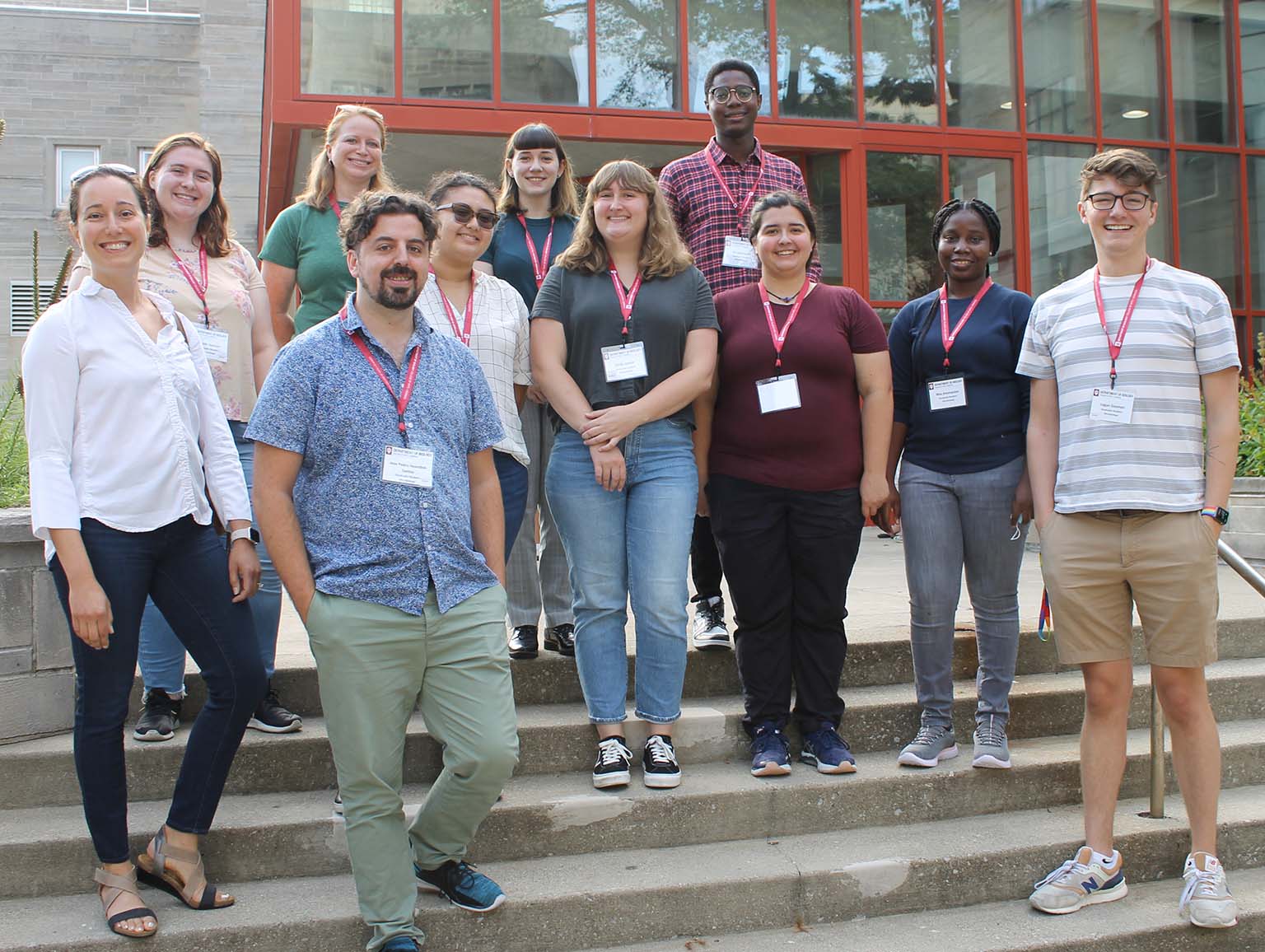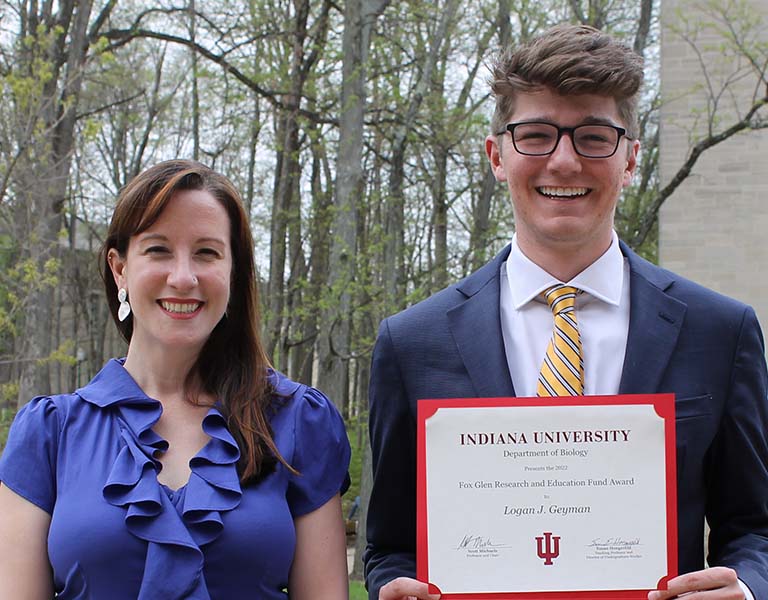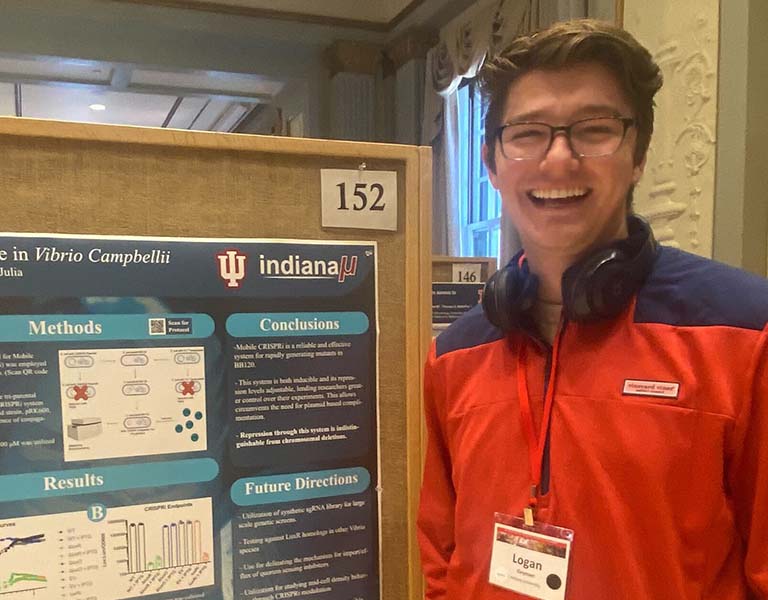A natural-born scientist
Logan Geyman stands out among his classmates—literally. He's 6 feet 4 inches tall. But, it’s his determination, dedication, and discipline to research that have especially earned him notice.
Geyman is a first-year Ph.D. student in the IU Microbiology Graduate Program. He is a member of Associate Professor Julia van Kessel's lab in the Department of Biology. He also worked in van Kessel’s lab as an undergraduate.
“Because Logan has worked in my lab since he was a sophomore at IU, he’s a core lab member, mentor, and leader in our group,” said van Kessel. “He’s one of the brightest and most dedicated students I have encountered, devoted to his education and science career. Logan is passionate about science in many forms: basic biology, human health, science communication, and education. He will shine as a star in grad school here at IU and in his future career.”
Geyman is interested in molecular tool design and understanding how communication among bacteria can be leveraged as a target for new therapeutics to fight infections.
“I really enjoy thinking about how pathogens might evolve around new drugs,” said Geyman. “Our lab studies quorum sensing (a cell-cell communication signaling process used by some bacteria). We want to know how and why bacteria communicate. Being able to talk to their neighbors allows these bugs to coordinate their behavior, making them really good at forming robust communities. This behavioral coordination also means they're exceedingly good at making us and our livestock sick. While we lean on antibiotics to both treat and—as in the case of livestock—prevent infections, resistance to these keystone compounds means bacterial infections are becoming more severe, more deadly, and more costly. To help curb this effect, we’re looking at bacteria’s communication system as a way to suppress the behaviors that lead to infection. While developing these drugs is imperative, so is understanding how bacteria might circumvent them.”
Specifically, Geyman is investigating how inhibiting bacterial communication impacts how well an organism survives, proliferates, and infects hosts. Understanding this allows us to make predictions on how resistance to treatments might emerge and spread in bacterial populations. And, understanding the nuances of bacterial communication will aid in determining dosages, delivery methods, and guidance on use to minimize resistance and maximize the lifetime of treatments. To facilitate this for future drug development, Geyman hopes to use his research data to build computer models that report on how sensitive drug targets are to the emergence of resistance.
The making of a research scientist
Geyman has loved science for as long as he can remember; however, after watching the “How bacteria ‘talk’” TED Talk by Princeton University molecular biologist Bonnie Bassler during his sophomore year in high school, he focused his research interests on quorum sensing. This in turn influenced his college selection.
Hailing from Zionsville, Indiana—Geyman admits that the affordability of attending an in-state university for his undergraduate degree attracted him to Indiana University, but that IU Bloomington’s classification as an R01 or “very high research activity” institution played a major role in his decision to attend IU. The final aspects, however, that swayed him were the opportunity to join the IU ASURE program as part of its pilot class and the presence of van Kessel’s quorum sensing lab on campus. Geyman credits van Kessel and his ASURE mentor, Mike Manzella, in influencing his choice to pursue a Ph.D. and, by extension, a career in research.
“Their mentorship, support, and guidance gave me the confidence and skill set I needed to step into the field in a meaningful way. They provided me with research experiences that helped me discover my passion,” noted Geyman.
As an undergraduate, Geyman received the IU Provost’s Award for Undergraduate Research and Creative Activity—granted annually to five exceptional IU students for remarkable work in their fields. Additionally, he received the IU College of Arts & Sciences Award for Undergraduate Research and Creative Activity, the Drs. Sidney and Becca Fleischer Research Scholarship (given to outstanding undergraduate students demonstrating strong potential for success in scientific research careers), and the Jim Griffin Research Scholarship (awarded to ASURE students to fund summer research experiences). The Griffin scholarship funded his first experience in the van Kessel lab.




 The College of Arts
The College of Arts